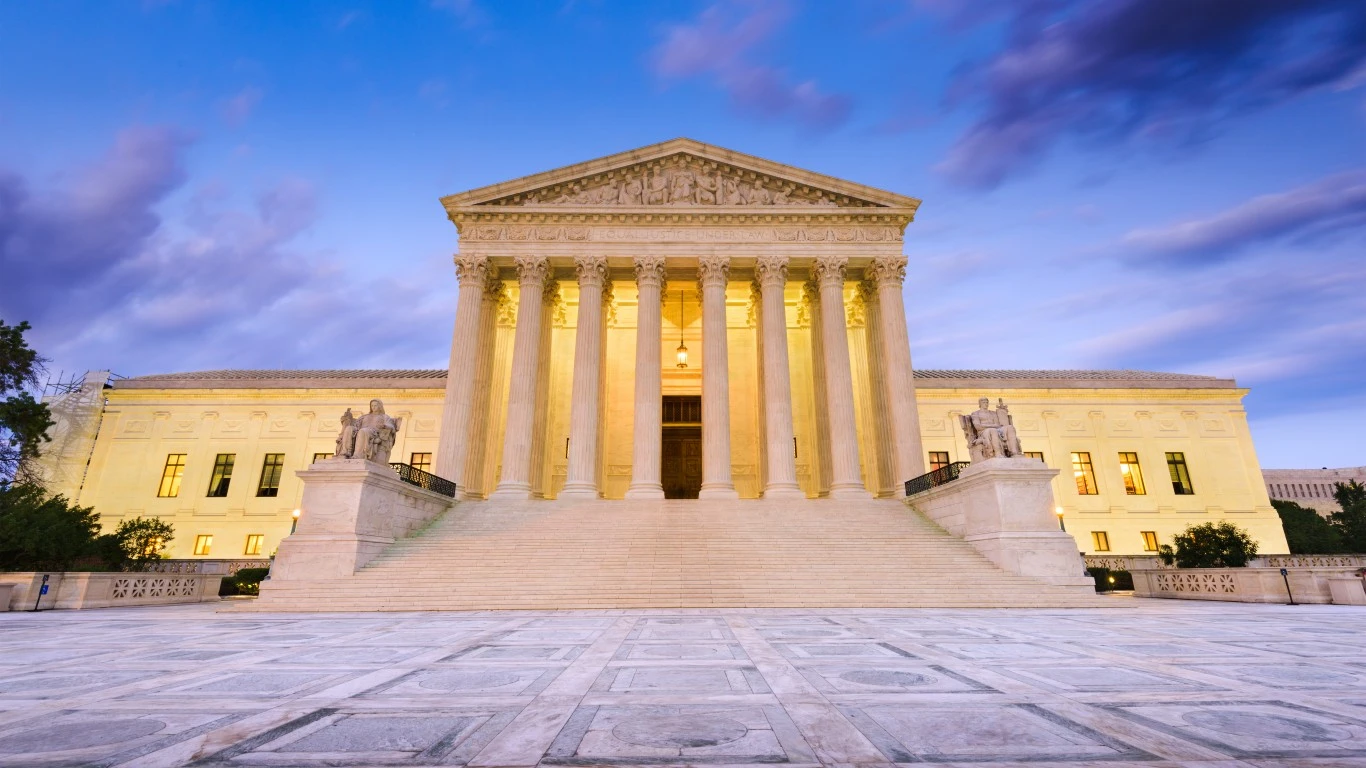
By David Callaway, Callaway Climate Insights
A new Harvard poll out today reports that 78% of Americans have been impacted by extreme weather events such as heat waves, floods or fires in the past five years, and that more than two-thirds of them now see climate change either as a crisis or a major problem.
This sampling presumably does not include the nine members of the U.S. Supreme Court, who are expected to rule this week that the government’s Environmental Protection Agency does not have the authority to regulate how businesses, cities and states set environmental rules. Instead, it will rule that power belongs only with Congress, which presumably has nothing better to do and will jump right on it.
The ruling is just one of a series of outrageous judicial attempts to overturn existing laws in the wake of the Trump era, with the Roe v. Wade ruling to come later this week, likely Friday. As more than three-quarters of the country bakes this week in heat above 90 or 100°F., and fires rage in New Mexico, Arizona and Southern California, it is clear climate change has moved from a scientific or intellectual concept to a pulsing, life-and-death emergency.
That a group of supposedly educated jurists on the high court would instead waste time playing politics and causing actual harm to their government’s efforts to help stem the impacts of global warming is a telling message that the in this country at least, some of our leaders won’t be ready to fight until the fire is at their own door.
More insights below . . . .
Tuesday’s subscriber insights: Big Oil is big on green hydrogen
. . . . One of the advantages of fossil fuels is that they can be transported, unlike, say, solar, wind and hydro. Which, when talking about renewable energy, is where green hydrogen comes in. And it seems oil companies, with their familiarity with movable energy, cannot resist. Read more here. . . .
. . . . Go to practically any retail outlet in America and chances are a huge proportion of the items on sale are made in China. So far, that does not include autos, but that may change as that country ramps up its burgeoning EV business, with large sales already happening in Europe. Read more here. . . .
Editor’s picks: Busting solar myths; growing CO₂-hungry crops
The northern lights dance across the sky over the glacial lakes in Voyageurs National Park in Minnesota, one of the darkest places in the contiguous United States. They can appear any time of year, including summer.
Photo by Sam Brueggeman pic.twitter.com/qlRAokLGuO
— US Department of the Interior (@Interior) June 18, 2022
Busting solar myths
Despite the fact that solar is a growing part of the energy system, various aspects remain poorly understood, writes Yale Climate Connections contributor Daisy Simmons. In a recent article for YCC, Simmons dispels some common myths. These include the incorrect assumption that solar is expensive. “Large, utility-scale projects, broadly speaking, are cheap and getting cheaper all the time. In fact, the cost of electricity from utility-scale solar fell 85% between 2010 and 2020.” Also, the report notes, solar doesn’t only work when the sun is shining. In reality, Batteries can store power for nighttime and cloudy days. Finally, solar alone is not the perfect solution to our energy challenges. A range of solutions is needed, and “before solar can reach its full potential, there’s more work to be done on storage and recycling and to make sure that everyone can access the technology.”
Researchers seek crops that can absorb CO₂ faster
A new research project is looking to genomics as a solution to decarbonization by genetically engineering plants to not only absorb more carbon from the atmosphere but hold on to it longer. According to a report in S&P Global Market Intelligence, the Innovative Genomics Institute (IGI) is trying to further the process and has received $11 million from the Chan Zuckerberg Initiative. “We’ve understood for some years that CRISPR genome editing could be used to help agriculture adapt to climate change,” said IGI co-founder Jennifer Doudna, who shared the 2020 Nobel Prize in Chemistry with Emmanuelle Charpentier for their work on CRISPR. “It’s a thrilling new step to apply the same toolkit to carbon removal and address climate change directly.” The S&P report notes the project will be carried out in three research groups that will study commercial crops, with the aim of improving the carbon capture abilities of agricultural land.
Today in wildfires
. . . . As of June 21, the U.S. Fire Information for Resource Management System reported three new large incidents, only one large fires contained, and 15 uncontained large fires in the U.S. Fire activity remains high in the Southwest region, where 18 new fires are reported, with 10 uncontained large fires. New Mexico’s Hermits Peak Fire, east of Santa Fe, has burned nearly 350,000 acres and destroyed more than 900 structures. The Hermits Peak fire began April 6 as a result of prescribed fire that got out of control in the Santa Fe National Forest. Across the nation, the National Interagency Coordination Center reports that on Sunday alone, 23,251 acres burned, and so far this year, 30,772 fires have burned 3.18 million acres. That’s a 162% increase in acres burned by this date compared to the 10-year average (2012-2022). . . .





